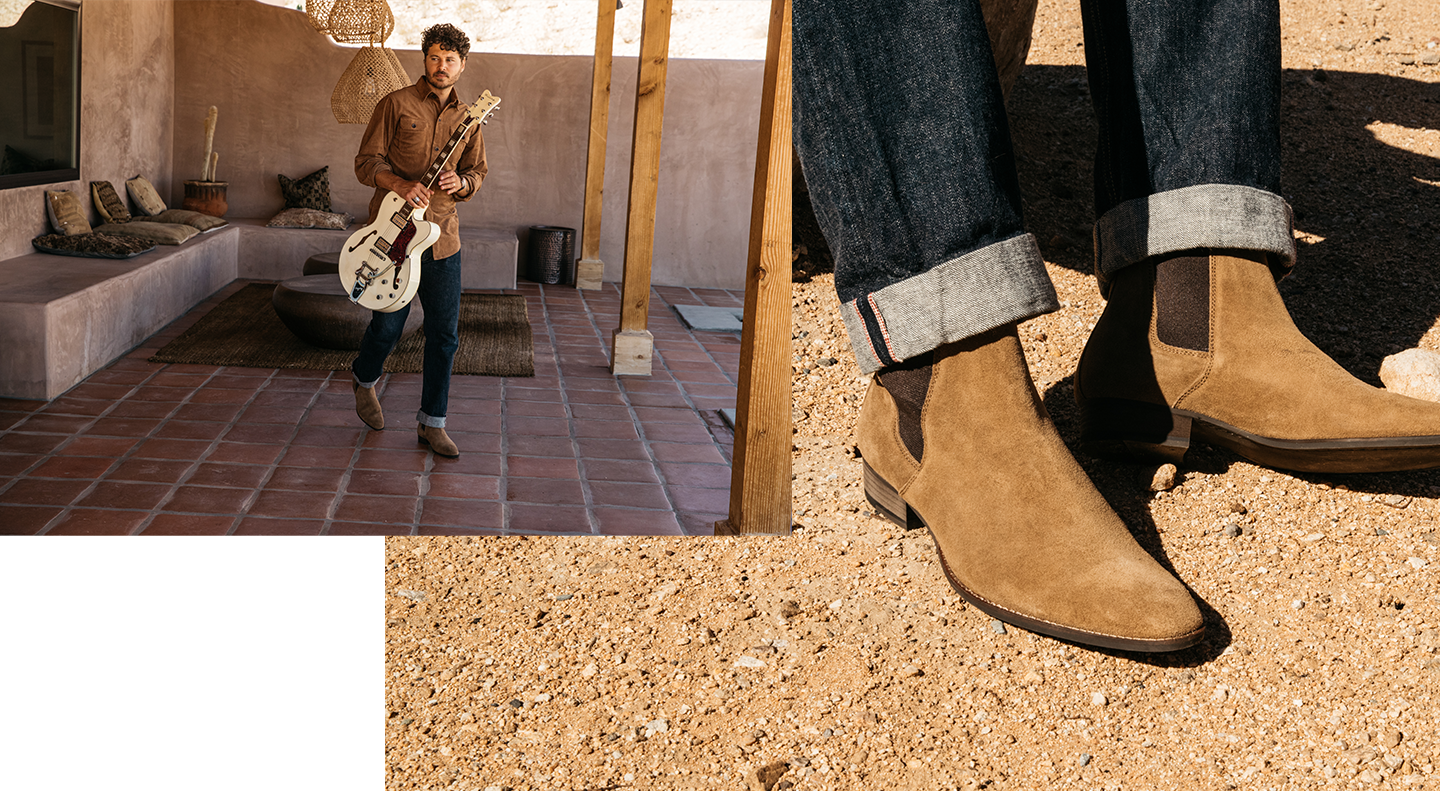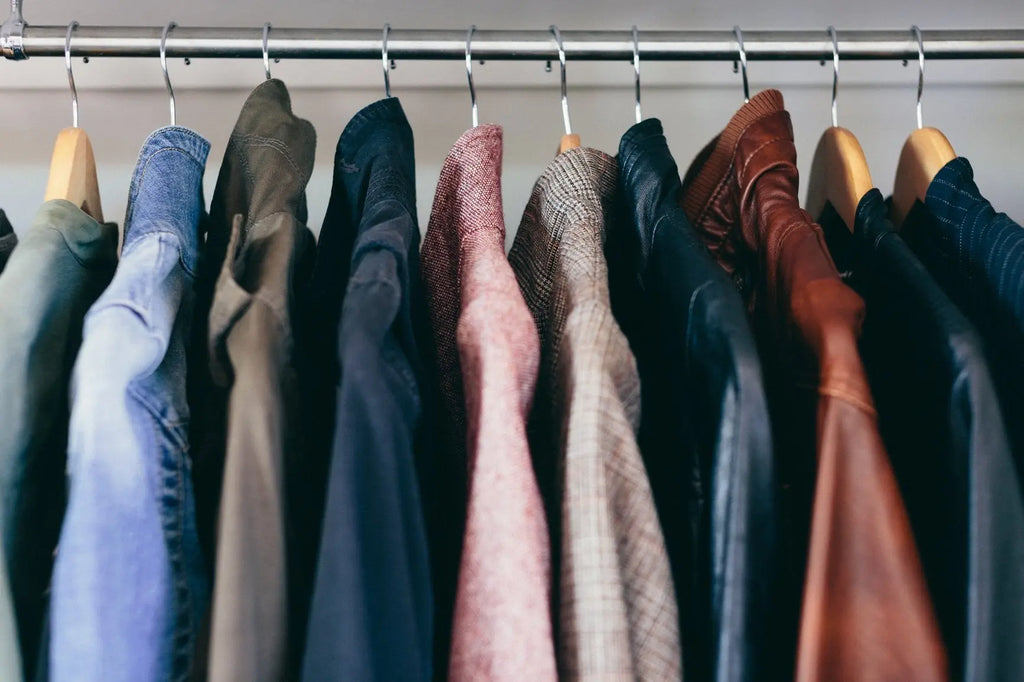Know Your Measurements

Off-the-peg suits aim squarely for the middle when it comes to sizing. But how many people do you know have the sweetspot for 10 different body measurements? Exactly. Knowing your measurements can save you time, not to mention the slight discomfort of having yourself measured by a complete stranger.
Speaking of which, it’s fairly difficult to do these yourself, so find a friend who would be up for it - and then buy them a beer to say thank you. Make sure the tape measure is taut but not strained. You’ll need the following:

Height: Measure parallel from the top of your head to the floor.
Neck: Measure around your neck at the level your shirt collar would sit. You should not feel restricted by the tape for a comfortable fit.
Shoulders: Measure from the end of your left shoulder to the end of your right shoulder.
Chest: Measure horizontally around the chest roughly at nipple level, under the armpits, and over your shoulder blades.
Waist: Measure horizontally around your stomach at the level of the bottom of the ribcage.
Nape to waist: Measure down the contour of your back from your collar to the area roughly opposite your naval.
Seat: Measure around your hips and buttocks at their widest point.
Thigh: Measure around the thigh at its fullest.
Sleeve length: Measure from where the seams on the shoulder meet to where you want the sleeve to end.
Inside leg: Measure from the lowest part of the crotch of your trousers, keeping the measure taut, down to where you wish the bottom of the trousers to end.
Now you’ve got that, you can start to focus on your body type - like we covered previously - and what suit type goes with it.
Athletic Build
If you’re in good shape you’re likely to have what tailors call the “perfect V” shape – a strong shoulder line and a nipped-in waist. If that’s the case, avoid cuts that are too narrow, you want a suit to have a bit of room to breath.
Single breasted suits will compliment your shape, whereas double breasted suits will just make you look a bit boxy. If you’re particularly ripped, look for a soft cut on the shoulder to help soften the contrast between shoulder and the suit.
One of the best we’ve seen lately is this The Mayfair from Paul Smith - a classic blue-wool mohair you can wear anywhere (shown above).
Stocky Build
If your frame is more linebacker than quarterback, you need something a little more robust than the athletes. Stick with a two-button suit, anything extra will just add more bulk when you don’t need to.
Don’t be tempted to go baggy on the trousers, a suit is all about balance. Look for a pair of fitted (but not skin-tight) trousers with a tapered ankle to add a bit of shape. Lastly, avoid the extraneous detail. Pocket squares or patch pockets acts as a focal point that a man with your stature doesn’t need.
Dunhill does an impeccable example of both in blazer and trouser (shown above).
Skinny Build
Sliding to the other end of the scale, if you’re on the lighter side, the good news is that you have a lot more choice when it comes to patterns than your larger brethren. But before you get to that, look for suits with a roped shoulder. It’s lightly padded and that adds a nice arc along your shoulder line to help give you a more defined silhouette. It’s famous among Italian suit makers and is also known as the ‘Neapolitan shoulder’.
Double-breasted jackets are a skinny man’s best friend and add presence, but ensure your trousers are well fitted otherwise that immaculate cut blazer will be overshadowed. When it comes to patterns, go wild, plaids, houndstooths and checks can be worn with ease.
Stella McCartney’s brown-herringbone suit is a fine example (shown above).
Choosing Cloth Fabric

Suits come in a wide range of fabrics, all have their pros and cost. At a fundamental level a good suit should be breathable, and help keep your body at an even temperature and not trap heat. Below are some of the most common.
Polyester: Most off the peg suits will be made from this synthetic fibre. It’s cheap to make so there’s a lot of choice, but it does retain heat (think hot armpits and lower back) and it wrinkles easily. Also, depending on the blend, it can have a glossy shine, which is definitely not for everyone.
Silk: Is rare, expensive, but feels and fits beautifully. However, it does come with an almost two-tone shine which should only be worn if you summer at Lake Capri.
Cashmere: Only the finest suits are made from cashmere. They’re breathable, but retain an incredible amount of warmth when needed, but expect to pay four figures for one.
Cotton/Linen: The quintessential summer suit, but if you’re planning on packing one for a trip, expect it to be riddled with creases.
Wool: Probably the most versatile of all the fabrics. However, it can be a bit much if you live in hot climates.
Blends: Suitmakers now mix all of the above to give the best qualities from both. Mix and match to your taste.
General Suit Etiquette

Once you’ve picked out the right suit for you, there are just a few more things worth remembering.
- Never button the bottom button of a suit jacket. It dates back to king Edward VII who was paying homage to the riding jacket that suits replaced. Follow suit.
- Always button the top button of your shirt if wearing a tie.
- Unless sat down, your suit should be buttoned. As you sit down, make sure to open the blazer so you don’t ruin it.
- Don’t show any leg. Make sure that your socks are long enough to not expose your leg when you sit down.






